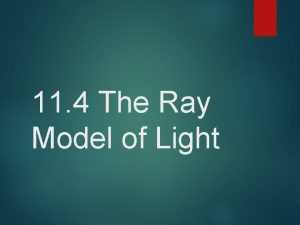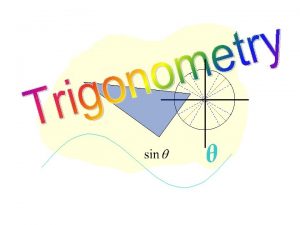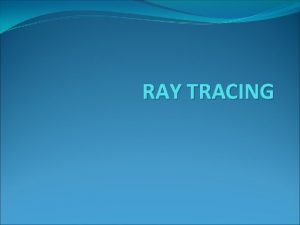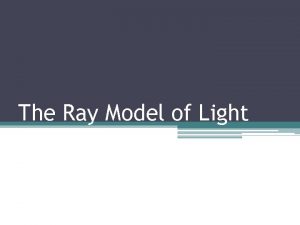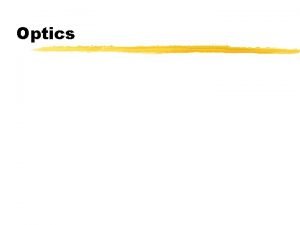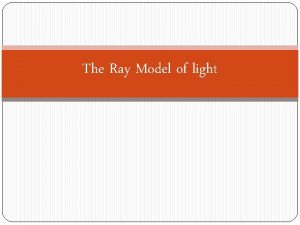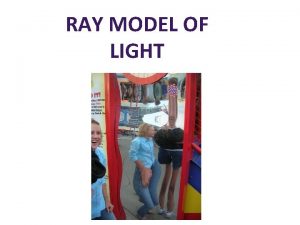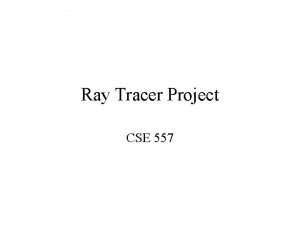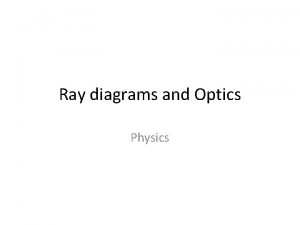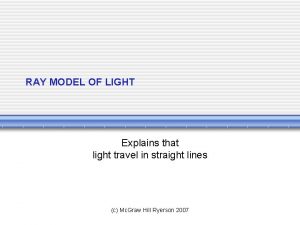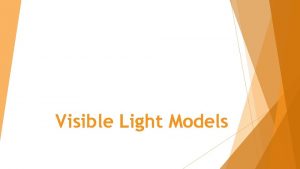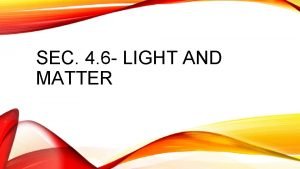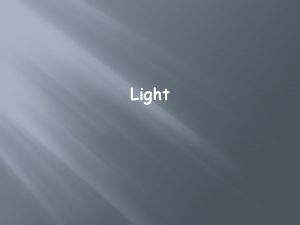The Ray Model of Light Light and Matter

















- Slides: 17

The Ray Model of Light

Light and Matter • Light is represented as straight lines called rays. • Ray diagrams are drawings that show the path that light takes. • Each ray ends with an arrow to indicate the direction of travel.

Light and Matter • Ray diagrams explain brightness. i. e. more rays that reach your eyes, the brighter the object appears

Light and Matter • Ray diagrams are used to explain what happens when light strikes an object. • Light travels in straight lines until it strikes something. • Material have different properties which affects what happens when light strikes them

Light and Matter • Transmit - Light passes through them. Example: Clear glass • Absorb – Light is absorbed by the object and turned into heat • Reflect – Light bounces off the object.

Light and Matter The properties of materials can then be further classified • Transparent materials, such as clear glass or clear plastic, transmit light freely. • Transparent materials absorb and reflect very little light. Example: a clear window

Light and Matter Translucent materials transmit some light, but not enough to see through the material clearly. Example: A frosted window pane. Some light can pass through.

Light and Matter • Opaque objects absorb and reflect light, but they do not transmit it

Flat Mirrors and Reflections • Mirrors- smooth surfaces of glass with a thin reflective film 9

Incident ray Angle of incidence NORMAL Angle of reflection Reflected ray

Reflection terms • original ray of light that strikes a mirror plane is called the incident ray • the ray that bounces and strikes your eye is the reflected ray • the normal is the line perpendicular to the mirrors surface 11

• the angle of incidence lies between the incident ray and the normal • the angle of reflection lies between the reflected ray and the normal 12

Complete the reflection

Complete the reflection

Complete the reflection

Reflection of light • all objects that do not reflect an image still reflect light. • Everything you can see is reflecting light.

Reflection of light • light rays reflect on an uneven surface are scattered in different directions (diffuse reflection) • results in no bright spots or flashing reflections
 Ray ray model
Ray ray model Terminal ray meaning
Terminal ray meaning Ray casting vs ray tracing
Ray casting vs ray tracing Geometric ray model
Geometric ray model Ray model of light
Ray model of light Ray model of transparent
Ray model of transparent The ray model of light
The ray model of light Koosha golmohammadi
Koosha golmohammadi Median and lateral apertures
Median and lateral apertures Gray matter and white matter
Gray matter and white matter White matter vs grey matter
White matter vs grey matter Light light light chapter 23
Light light light chapter 23 Light light light chapter 22
Light light light chapter 22 Chapter 22
Chapter 22 Classification of matter section 1 composition of matter
Classification of matter section 1 composition of matter Composition of matter section 1
Composition of matter section 1 Chapter 2 matter section 1 classifying matter answer key
Chapter 2 matter section 1 classifying matter answer key Composition of matter section 1
Composition of matter section 1
